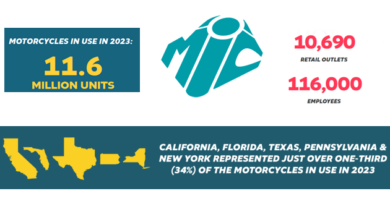May 2, 2011 – ‘Clean’ challenge goes greener
A record number of electric snowmobiles registered for the 2011 SAE Clean Snowmobile Challenge held in March at Michigan Technological University’s Keweenaw Research Center in the Upper Peninsula. For this year’s 12th annual competition, the future sleds proved to be greener than ever, while also showcasing new technology that could eventually make its way to production snowmobiles.
The Clean Snowmobile Challenge is a collegiate design competition of the Society of Automotive Engineers. In the internal combustion category, engineering students from participating schools take a stock snowmobile and reengineer it. Their aim: to reduce emissions and noise while maintaining or boosting performance.
The zero emissions category, for battery-powered sleds, is sponsored by the National Science Foundation, which uses electric snowmobiles while conducting research in pristine arctic locations.
Thirteen teams participated in the internal-combustion division, with five participants in the zero-emissions category, the most since the division was added in 2006. The total number of entries is the highest in Challenge history.
While electric snowmobiles themselves may have no emissions, their batteries must be charged with electricity. In the past, much of that electrical power has been generated by coal-fired plants, which emit carbon dioxide into the atmosphere. Last year, however, Challenge organizers took a step to mitigate those greenhouse gas emissions.
“We put a solar panel out back of the Keweenaw Research Center,” said Jay Meldrum, the Challenge’s co-director. “In a year’s time, one solar panel lets us bank enough energy to charge all the zero emissions sleds.”
That means that by the time the student engineers arrived in March, the solar panel generated at least as much electricity as the electric snowmobiles used during the competition.
The SAE Clean Snowmobile Challenge team has also been working with two emissions control firms to test a new, lighter, noise- and emissions-reduction system.
“The big edge is packaging and weight,” said Jason Blough, the team’s advisor and an associate professor of mechanical engineering-engineering mechanics. “The technology allows the catalytic converter and the muffler to be in one unit.”
That’s helping the Michigan Tech team address its sled’s weight problem.
“We’ve been a heavier sled, and this lets us go on a diet,” said Blough. “The catalytic muffler will be smaller than the separate units we ran in the past.”
Initial tests conducted on behalf of Vconverter of Whitmore Lake, Mich., and Environmental Control Corp. of St. John’s, Newfoundland, showed that the system yielded improved emission reductions. The team is also providing feedback on its overall performance and durability.
Clarkson University won the overall competition in the 12th Annual Clean Snowmobile Challenge. Clarkson took top prize in the internal combustion category and third place in the zero emissions category. Wisconsin-Madison took second (and first in the zero emissions category), with Idaho, SUNY-Buffalo and Wisconsin-Platteville rounding out the top five overall. McGill University took second place in the zero emissions category.
“It was a great week of snow and cold for the Clean Snowmobile Challenge” Meldrum said. PSB




